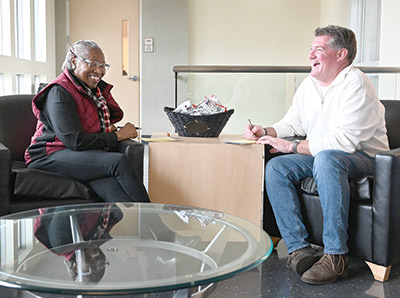Georgetown County
Council retreat links strategic focus to land-use plan update

These are the headlines for Thursday, Feb. 5, 2026:
“Affordable housing partnership opens first homes.”
“Major manufacturer relocates to county employing 1,200.”
“Job market booms.”
Whether those make it into print three years from now depends on how well Georgetown County Council is able to convert its vision into policy and action. And the best opportunity to do that is with the update to the land-use element of the county’s comprehensive plan, a consultant told the council after a day-long retreat this week.
“The most important thing you can do as County Council is roll up your sleeves and jump right in,” said Irene Dumas Tyson, the planning director for the Columbia-based firm Boureaux. “The thing you’re going to have to do to have these headlines is to get the land-use element right.”
The county started work on the element in 2018, but delayed the process in 2020 after complaints that it didn’t include enough public input. It moved on to the other nine elements of the comprehensive plan that state law requires local governments to adopt and then update every 10 years.
Tyson served as facilitator for the council retreat, the third convened by County Administrator Angela Christian since she was hired in 2020. Tyson helped the county’s nonprofit Economic Development Alliance prepare an action plan last year. The alliance now has groups working on affordable housing and workforce development.
Council members had a range of goals for the coming years – which they were asked to express during the retreat in the form of newspaper headlines – but they overlapped in the areas of creating housing that will help attract and retain workers, which will make the county more attractive to new businesses, which will in turn increase the tax base.
Population growth in the county is forecast to remain stable through 2030. “That’s not the best thing for us,” Christian said.
Of the current population of 65,000, only about 15,000 fall within the 20 to 54 age group that defines the prime working years.
“We’ve educated our kids away from our state,” Christian said.
At the same time, she is concerned that the pace of growth in Horry and Charleston counties will begin to dictate change in Georgetown County.
“Those folks who are moving to your county don’t have a connection with Georgetown,” Christian said.
The county needs to maintain control of its future, Council Member Stella Mercado said. When growth comes, “I’d like them to work and live in our county,” she said.
Council Member Clint Elliott said he worries about gentrification.
“We’re bringing those people in and forcing our people out,” he said.
The county needs to “implement change and still maintain the quality of life,” Council Chairman Louis Morant said.
“For our demographics, that’s two different things,” Council Member Bob Anderson said.
That’s what makes the land-use element important, Tyson told the council.
“Y’all are truly going to have to be the leaders,” she said.
The county plans to hire a consultant to complete the land-use update, said Holly Richardson, the county planning director.
With the consultant hired by April, public meetings around the county will start in the summer. A draft of the plan will be completed by the fall and sent to council for final approval by the end of the year, she said.
Anderson chafed at the delay.
“I think we ought to have it done by the end of the second quarter,” he said. “The end of the fourth quarter is not good.”
Even if the update was done by staff, Christian said, the timeline wouldn’t change because public notice is needed for each of the meetings.
The council currently has the natural resources element on its agenda, but has deferred action twice. The update went through six drafts and increased the number of goals for environmental protection. A survey done in 2021 for the land-use element found 96 percent of the respondants thought natural resources were the county’s most important feature and 80 percent favored regulations to protect them.
“These goals should push us. They should be a little aggressive, but they should be attainable goals,” Richardson said.
Christian pointed out that some of the goals are beyond the scope of the county, such as reducing the use of septic tanks, which are regulated by the state. “I have real concerns,” she said.
The goals also include acquiring land for preservation, potentially using a penny sales tax recently allowed by the state for green space.
That land would become county property, which could entail maintenance costs, Christian said. It would also take land of the tax rolls.
“We are reducing our revenue with some of these things,” she said. “We don’t have the staff or the people to enforce some of these things.”
Among the goals is a county wetlands ordinance that would add to the protections provided by federal and state law. The county currently has a 15-foot building setback from saltwater wetlands, but no local protections.
Richardson noted that the comprehensive plan is a guide, not a regulatory tool. “Those regulations come out of the vision,” she said.
Including items like a wetlands ordinance in the comprehensive plan sets the stage for council action, Richardson said.
Anderson asked about the goal of banning single-use plastics. “That’s very political,” he said. “The best thing would be to have a referendum.”
The goal could be to start the process, Richardson said. She will work with Christian to update the recommendations.
Mercado said she was concerned about the council revising the draft that had been recommended unanimously for approval by the Planning Commission.
“We very much respect the environment,” Christian said, adding that people don’t see the economic development offers that are turned down for that reason. “Everything that comes in is not the right fit.”




